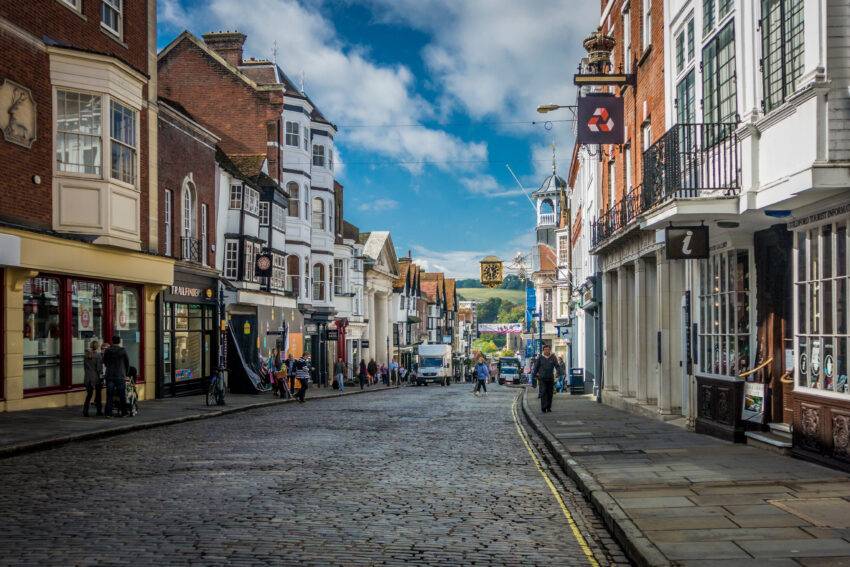
The overall vacancy rate across Britain rose by 13.9% in the second quarter of 2023, according to the British Retail Consortium (BRC).
They also found that around 6,000 retail outlets have closed their doors in the last five years. Increasing financial pressures – with everything from insurance to supply chain costs rising significantly – have been cited as the main reason for this exodus.
The success or failure of a high street right now very much depends on who is investing in these areas. Typically, high streets where local authorities are involved – such as they rent out commercial properties – are evolving quicker. Local authorities invest in these social spaces. For example, Warwickshire council are relaunching a Christmas campaign to encourage the public to shop locally by promoting independent retailers. Privately owned or rented commercial premises are less likely to have that sort of continuous investment.
In 2021, the Arcadia Group collapsed into administration.
This left around five hundred commercial premises empty. Many of which, still are. Empty units continue to be so as rents and business rates climb. Property managers or landlords simply cannot find people to occupy these spaces; and small independent retailers can’t be expected to take on the vast spaces left by the likes of Arcadia. Think Wilko’s. The chain itself can no longer operate as an in-person business, but the brand was bought out and taken online-only. High rents and high business rates will have had a major impact on that decision.
Helen Dickinson, CEO of the BRC, said in September: “The chancellor must freeze [business] rates to help keep a lid on retailers’ already high costs […] A £400m rates rise will also cost jobs, harm the economy, and damage the vibrancy of our town and city centres. While other business taxes, such as corporation tax and VAT, rise and fall with the movements in the economy, business rates must be paid in full whether firms are making a profit or a loss. This makes business rates the difference between retailers being forced to close existing stores rather than opening new ones.”
Those in sectors such as retail and hospitality are inundated with reliefs and schemes designed to help them. So why is this not working?
The Office of National Statistics has collated data that found for the 41st week (9th October to 15th October) of 2023, retail footfall remained relatively the same compared to the same period in 2022. However, overall, retail footfall decreased in six of the UK counties and regions in the 41st week of 2023. With the largest decreases occurring in Wales and the West Midlands.
Footfall – the amount of foot traffic a commercial premise is likely to achieve – can have a huge impact not only on the rent of a property, but also its business rates. A less accessible location is likely to see less footfall, though the rent and rates payable is likely to be lower.
Even with the lure of incentives and reliefs, retailers cannot offset the burden of increasing business rates or commercial property rent enough to return to the high street.
Anthony Hughes, Managing Director of RVA Surveyors, said: “Consumers and businesses are time poor. Online retailers offer greater convenience to consumers. This equals less foot traffic in shopping centres, and high streets. Big or small, if the audience is not there, businesses are going to struggle. Reliefs are designed to help offset the disadvantages, but with significant increases expected early next year, many may still face having to close their doors.”
Independent retailers – that is, businesses not part of a chain or franchise – tend to be hit hardest by loss of footfall. For bigger chains (who most likely have a greater online presence), it is the limitations on support that has a larger negative effect. Local authorities that run high streets and public spaces need to continue to adapt in order to encourage people to spend locally. From different types of businesses, to ensuring that independent retailers and larger chains sit side by side. Thereby offering the public a greater assortment, increasing foot traffic for all, and guaranteeing that appropriate commercial units are occupied or repurposed.
While some have recovered since the pandemic, many are still struggling. Habitat for Humanity (Great Britain) estimated that around 7,000 commercial properties owned by local authorities across England, Scotland, and Wales had been vacant for more than 12 months by 2020. Across the UK, 383 pubs closed before the end of June this year alone.
“Commercial premises aren’t empty because landlords want to keep it that way.” Hughes added. “They want people in there and, ideally, on long-term leases. Removing reliefs for landlords and empty properties isn’t going to help anyone in the long run; let alone our high streets.”